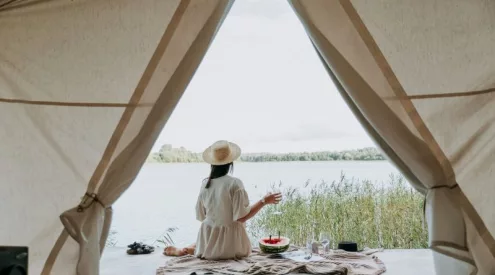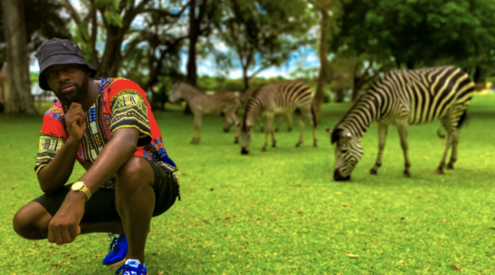Sometimes, despite our best intentions, we don’t know what we’re protecting when we advocate for marine protected areas, renew our annual Wild Card memberships or preach biodiversity. Scattered around the country, South Africa has the most UNESCO biosphere reserves on the continent. Read on and you’ll begin to see how our incredibly rich marine and terrestrial ecosystems support the most diverse array of life. From plants and flowers, insects and frogs to reptiles and magnificent mammals, big and small.
Here are SA’s seven UNESCO biosphere reserves:
1. Kogelberg
Just 40 kilometres from Cape Town, the Kogelberg Biosphere Reserve is South Africa’s oldest biosphere reserve, and was first designated in 1998.
The majority of its 103,629 hectares is comprised of mountainous landscapes including high peals and deep valleys, but also includes coastal plains and 1,629 hectares of marine area. The fynbos here is particularly unique because of the composition of the soil, proximity to the coast and moisture in the region, and is considered the ‘floristic heart’ of the Cape floral kingdom.
View this post on Instagram
2. Cape West Coast
On the south-western coast of South Africa, the Cape West Coast Biosphere Reserve includes ecosystems such as coastal plains and marine areas and diverse, fynbos-rich areas as well as wetlands, such as the Langebaan Lagoon which is a Ramsar site. The lagoon and Lower Berg River areas support a wide variety of birdlife, particularly wader birds. So far more than 240 bird species have been observed on the tidal flats of the Lower Berg River. You may also spot mammals such as steenbok or the Cape grey mongoose. Even black rhino were known to occur in these parts once upon a time.
View this post on Instagram
3. Cape Winelands
The Cape Winelands Biosphere extends northwards from that of Kogelberg and follows the Cape Fold Mountains and its valleys which form part of the Cape’s renowned winelands. The main types of vegetation across its 322,030 hectares are fynbos, succulent Karoo and the dusky dark renosterveld, which is home to the endangered geometric tortoise to to which it is endemic. There’s a rich diversity of species here from birds to frogs and mammals and reptiles. Leopard, caracal and klipspringer are found here, as well as the likes of the striped polecat.
View this post on Instagram
4. Vhembe
Vhembe Biosphere Reserve is in the north-eastern parts of the country, bordering Botswana, Zimbabwe and Mozambique. Its over 3-million hectares include the northern part of Kruger National Park, Mapungubwe National Park, as well as a number of provincial nature reserves, the Soutpansberg and Blouberg and the Makgabeng Plateau, which contains more than 1,000 rock art sites. This UNESCO reserve includes World Heritage sites, recognised centres for biodiversity and endemism as well as wetlands.
View this post on Instagram
5. Magaliesberg
The Magaliesberg Biosphere Reserve includes landscapes ranging from slopes, cliffs, crests, kloofs, rivers, wetlands and valleys over 357,870 hectares. Among diverse habitats and vegetation, according to UNESCO, 90 mammals are indigenous to the Magaliesberg region and 46.6% of the bird species recorded in this southern African sub-region are found in the reserve. The Cradle of Humankind World Heritage site is also part of this reserve.
View this post on Instagram
6. Garden Route
The Knysna basin is a key topographical feature of the area because it is responsible for the Knysna Estuary, ranked first in the country for its conservation importance. The Garden Route Biosphere Reserve is also an integral area for the conservation of large mammals, and is the natural habitat for the likes of elephant, the Cape buffalo and black rhino.
This reserve, which spans 698,363 hectares, includes the Tsitsikamma Marine Protected Area, Wilderness Lake Ramsar site, Garden Route National Park and two World Heritage sites, the Nelson Bay Cave and the Langkloof Valley.
7. Marico
The Marico Biosphere Reserve ecosystem is characterised by wetlands but the real superstars are the dolomitic aquifers, which feed into three river systems, again into the Marico River and eventually the Limpopo. The Marico River is thought to be one of the cleanest and healthiest rivers in South Africa. The savanna and grasslands also support vulnerable plant species and endemic fauna such as lion and elephants. This unique reserve in the country’s northern reaches is the most recently designated among the 10 sites (2018) and comprises 447,268 hectares.
View this post on Instagram
#maricoriver – one of the cleanest and healthiest River in South Africa. #MaricoBiosphereReserve
Source: Unesco / Ecological Sciences for Sustainable Development
Featured image: Scott Ramsay

















